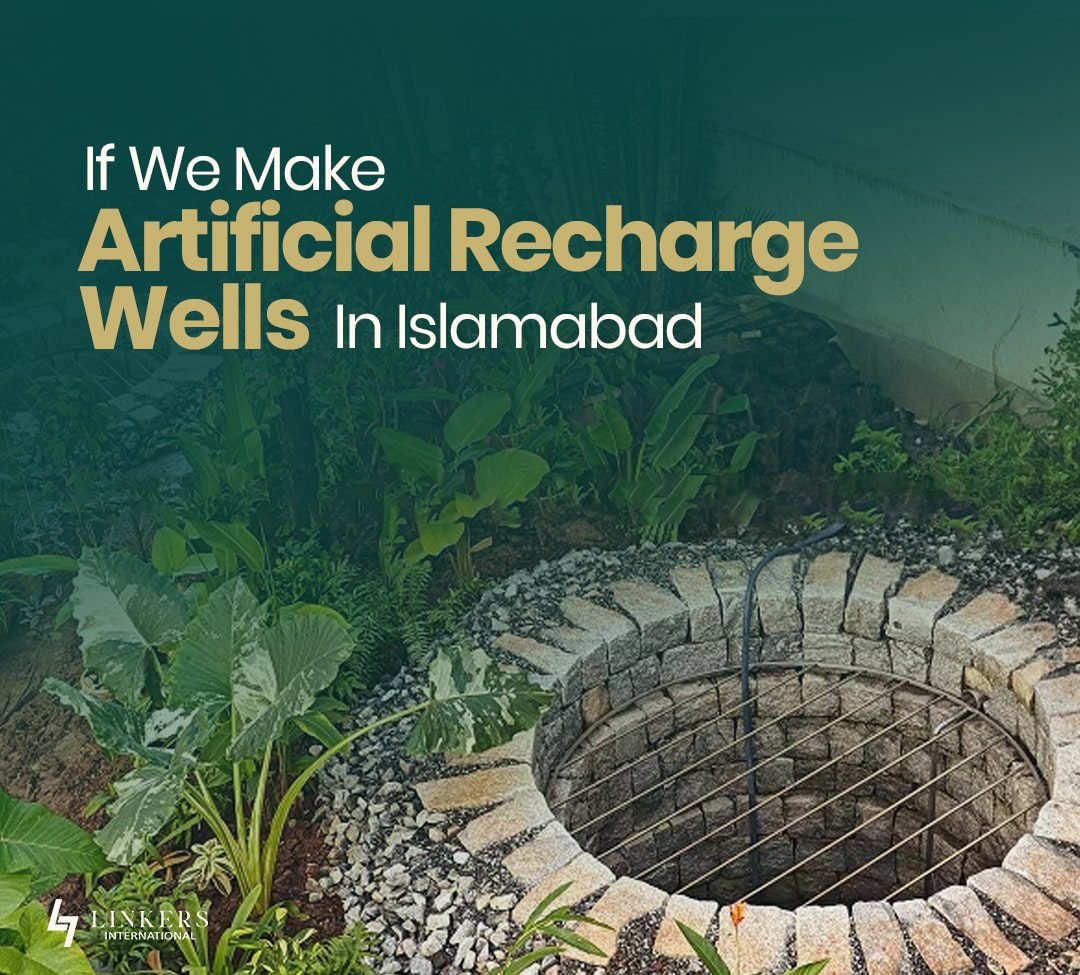As Islamabad’s skyline expands and its water woes deepen, the city finds itself in urgent need of sustainable solutions to protect its future. One such promising intervention is the use of artificial groundwater recharge wells, a concept that has been piloted with encouraging results across several parts of the capital. But are they truly effective and worth the investment?
Let’s take a closer look at what they are, how they work, and whether Islamabad should scale them up.
Why Islamabad Needs Recharge Wells Now
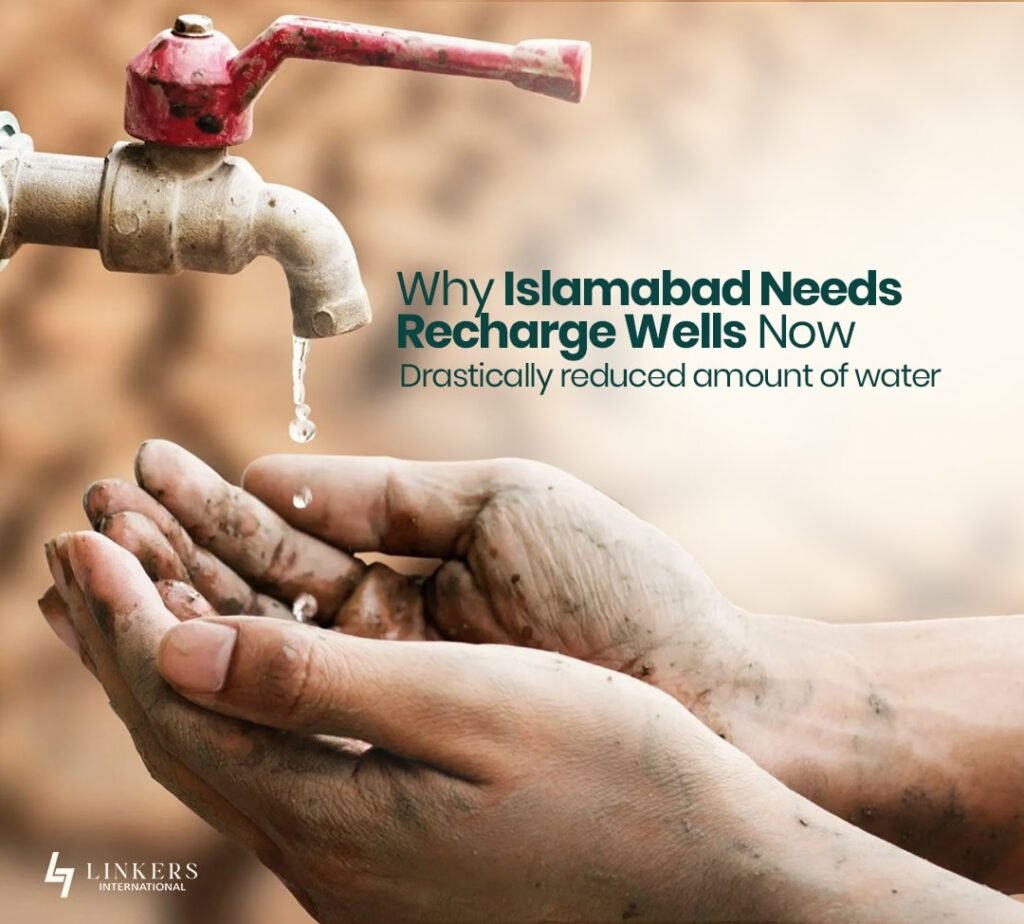
Islamabad, once known for its clean water and lush green landscapes, is now facing serious water stress. Groundwater levels are dropping by 1 to 1.7 meters every year, primarily due to over-extraction and rapid urban expansion. The demand for water exceeds 110 million gallons per day, while the city supplies only around 70 million gallons.
What makes things worse is that urban development has drastically reduced the amount of rainwater that can naturally seep into the ground. Paved surfaces, concrete buildings, and poor planning cause rainwater to rush away into drains instead of replenishing the aquifer. This has created a dangerous imbalance—where more water is being drawn from the ground than is going back into it.
What Are Artificial Recharge Wells & How Do They Work?
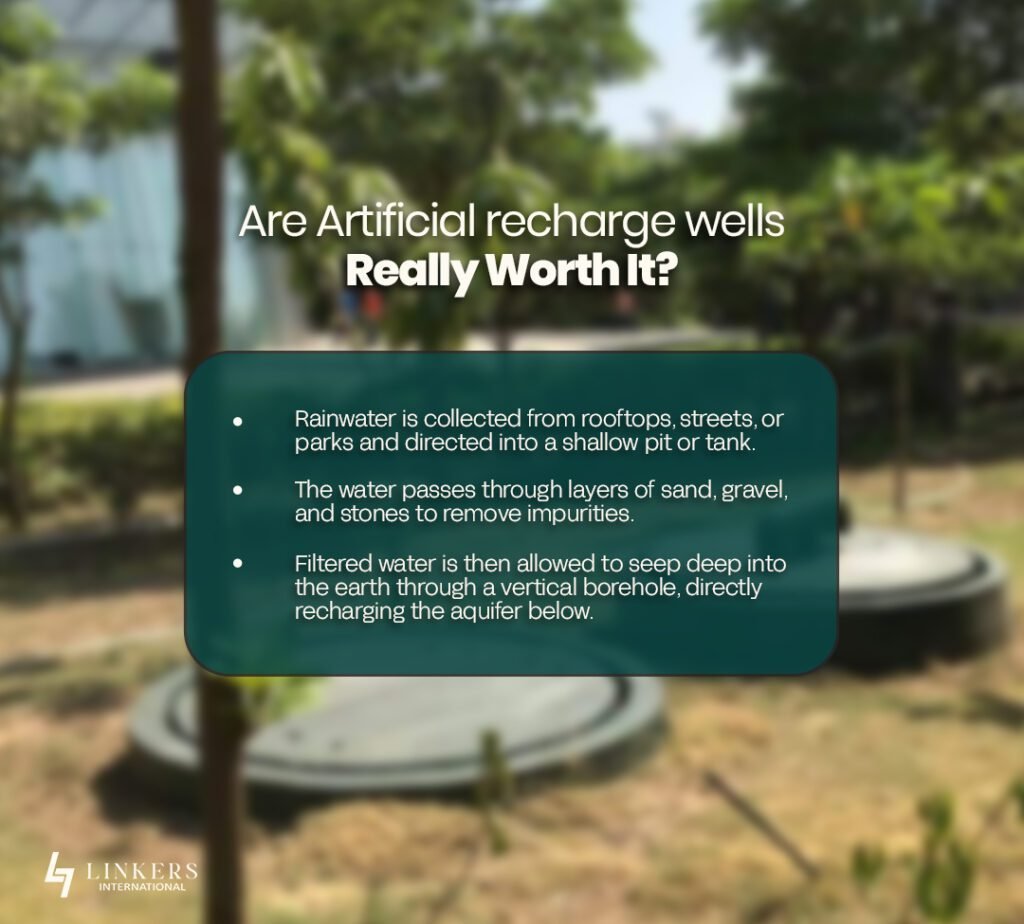
Artificial recharge wells are engineered structures designed to direct rainwater back into underground aquifers. Here’s how they work:
- Collection: Rainwater is collected from rooftops, streets, or parks and directed into a shallow pit or tank.
- Filtration: The water passes through layers of sand, gravel, and stones to remove impurities.
- Recharge Well: Filtered water is then allowed to seep deep into the earth through a vertical borehole, directly recharging the aquifer below.
Some advanced wells are also fitted with sensors to monitor water levels and quality in real time—making it easier to track the impact.
Pilot Projects in Islamabad – What Do the Results Show?
In recent years, the Capital Development Authority (CDA) and supporting partners have constructed over 100 recharge wells in various sectors of Islamabad, including parks, green belts, and residential zones. Early results are promising:
- Flood Mitigation: Areas near these wells saw reduced street flooding during heavy rains.
- Groundwater Recharge: In 2022 alone, over 10 million gallons of rainwater was successfully recharged into the aquifer.
- Water Quality: Tests show that the filtration process significantly reduced turbidity and microbial contaminants.
However, not all wells worked perfectly. Some areas (like parts of F-9 and G-11) faced technical failures due to poor geological suitability, highlighting the need for proper site selection based on soil and rock type.
Benefits vs. Challenges – A Balanced View
| Advantages | Challenges |
| Helps restore groundwater reserves | Needs a proper geological assessment before construction |
| Reduces rain-related urban flooding | Not all areas are suitable due to soil or rock conditions |
| Improves the quality of recharged water | Requires long-term monitoring and maintenance |
| Cost-effective (~Rs. 50,000–150,000/well) | To scale up effectively, hundreds more wells are needed |
The potential is clear, but like any infrastructure, long-term impact depends on thoughtful planning, regulations, and upkeep.
Are Recharge Wells a Scalable Solution?
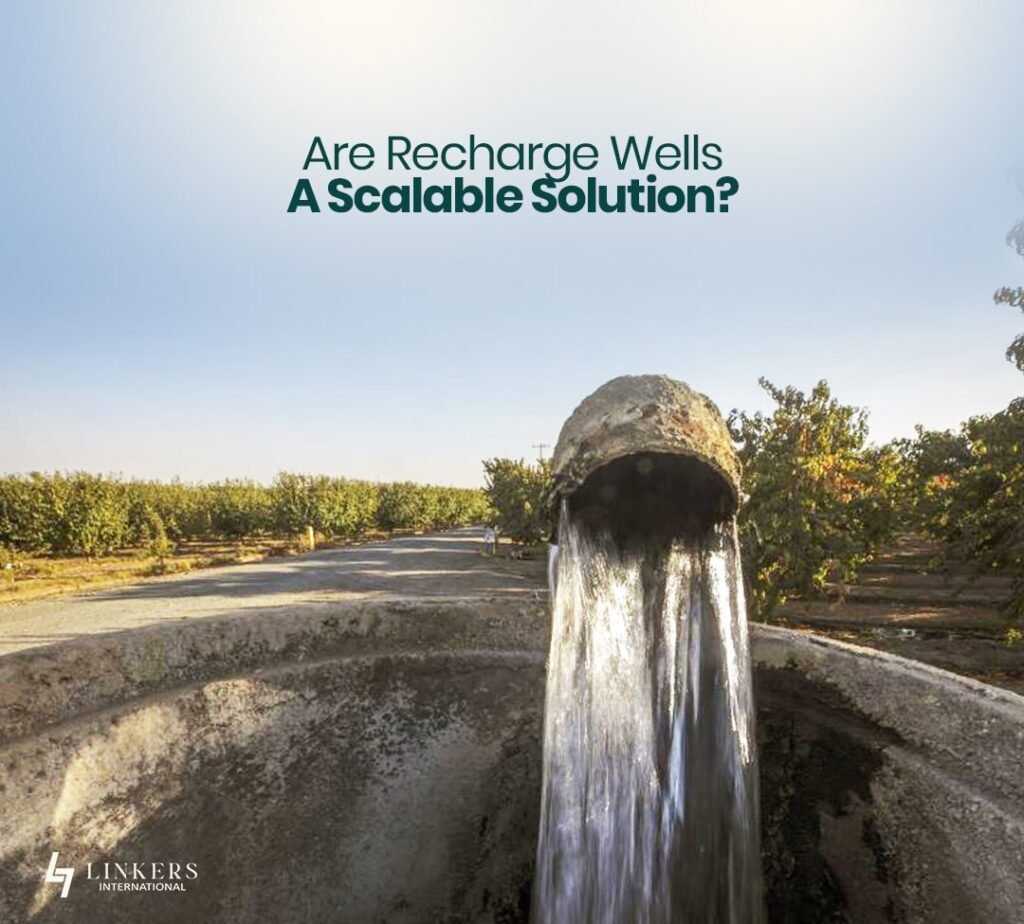
Experts suggest that if implemented citywide, recharge wells can be a game-changer for Islamabad. But for that to happen, Islamabad must adopt a systematic approach:
- GIS-Based Mapping: Use digital tools to identify the most suitable recharge zones based on elevation, soil type, and rainfall.
- Updated Building Regulations: Require new housing and commercial developments to include recharge systems.
- Public-Private Partnerships: Encourage businesses, institutions, and homeowners to build and maintain their own wells.
- Community Involvement: Awareness campaigns can promote water stewardship at the local level.
- Smart Monitoring: Install water-level sensors and create a central database for tracking recharge performance.
Recharge Wells in the Bigger Picture of Water Security
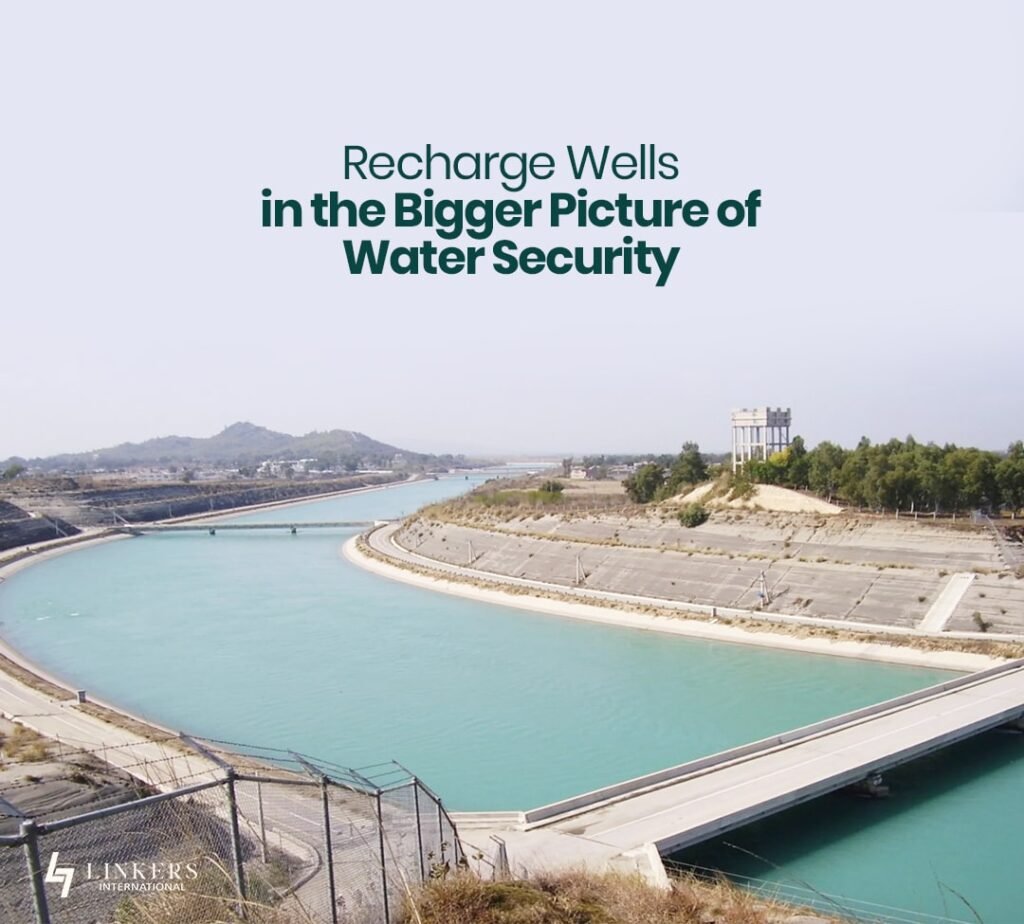
While recharge wells alone can’t solve Islamabad’s water crisis, they complement other large-scale solutions such as:
- The Ghazi Barotha water project (to bring surface water into Islamabad)
- Construction and maintenance of small dams
- Promotion of rainwater harvesting tanks for households
- Urban landscaping with permeable surfaces and native trees to aid natural recharge
In combination, these strategies create a resilient water management framework—where every drop of water is valued and recycled.
Conclusion: Are They Really Worth It?
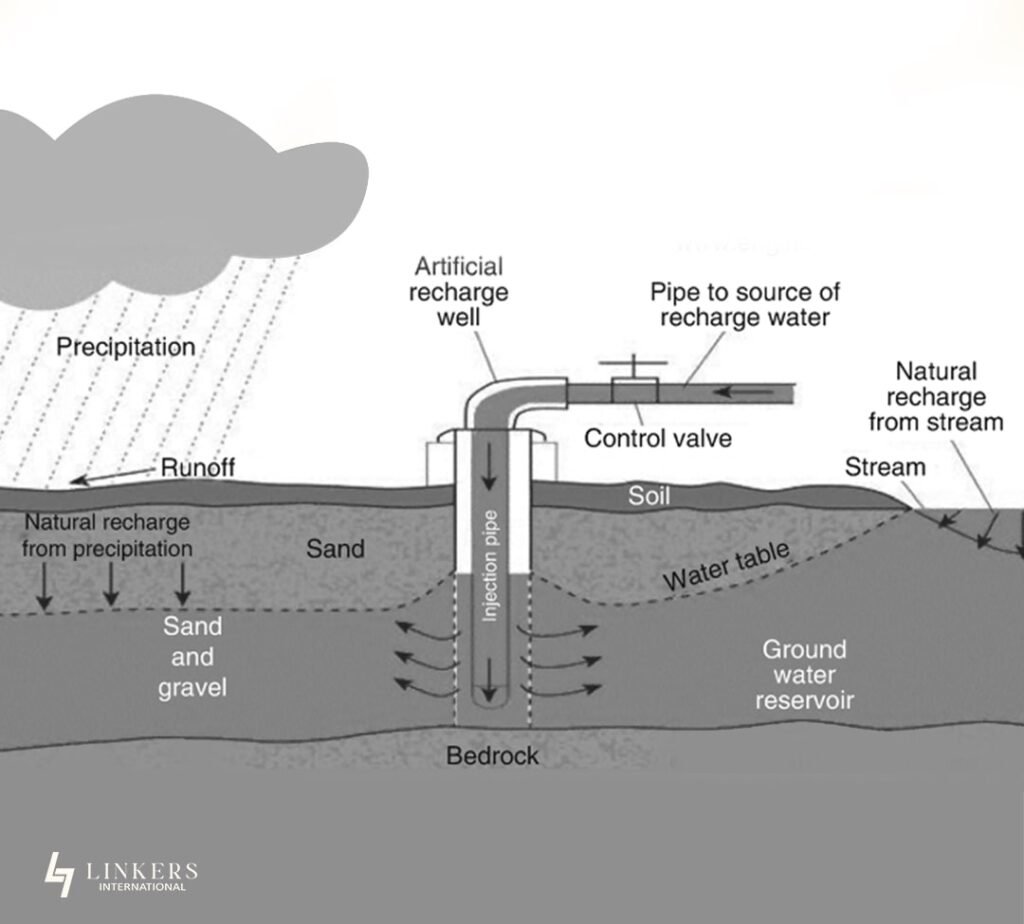
Yes, artificial recharge wells are definitely worth the investment, especially for a city like Islamabad that’s facing a growing water crisis. Early evidence from pilot wells shows real promise in both replenishing groundwater and mitigating floods.
However, they are not a silver bullet. Their success depends on:
- Scientific planning
- Strong governance
- Long-term community and institutional commitment
When integrated into a broader water sustainability strategy, artificial recharge wells can play a vital role in preserving Islamabad’s water future.


